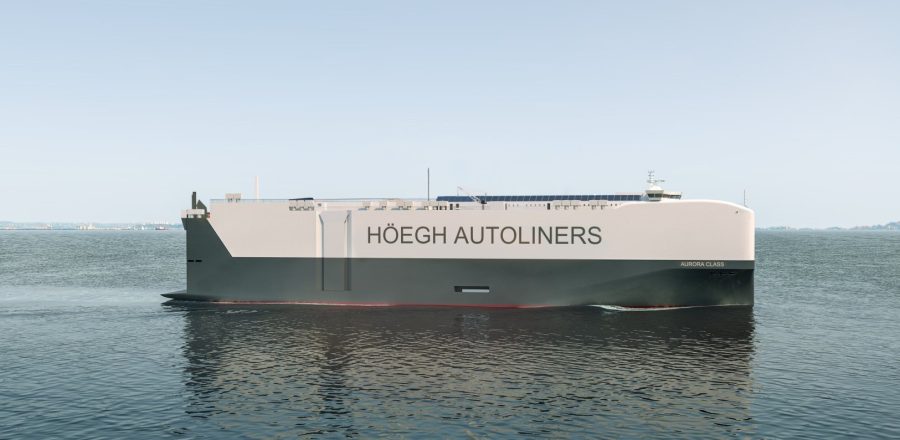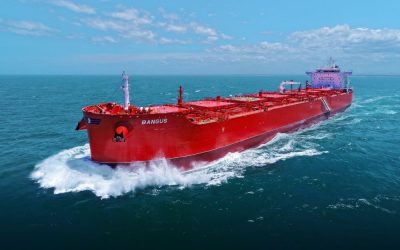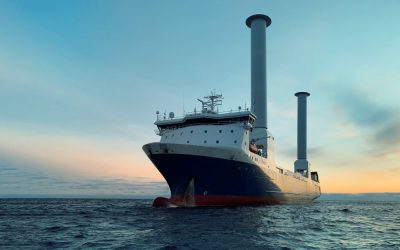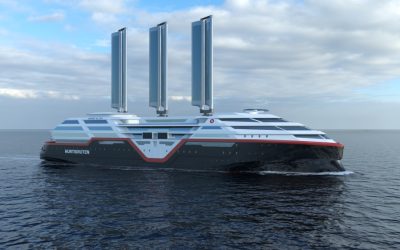By Malcolm Latarche
Ammonia as a marine fuel was making many headlines in May. In mid-month came news of a consortium of Lloyd’s Register, Mediterranean Shipping Company (MSC), SDARI and MAN Energy Solutions signing a MoU for a design for the ammonia dual-fuel operation of an MSC container ship. This is planned to result in the technical specification and associated design documents being developed for a variant of SDARI’s twin island 8,200TEU container ship design for a vessel contracted to LR class by MSC.
As part of the project, SDARI will prepare the specification and design documentation of the ammonia dual-fuel variant, whilst LR will verify that the design conforms with safety standards and rules relating to the usage of ammonia as a marine fuel. MAN-ES will deliver data for the engine design and ammonia fuel supply and emission abatement systems.
At the same time another consortium this time from Japan reported it had successfully completed land-based testing of what is claimed as the world’s first four-stroke ammonia-fuelled engine. The engine was developed by the consortium comprising IHI Power Systems, Japan Engine Corporation, Nihon Shipyard, NYK Line and ClassNK.
The engine will be installed in a tug next year and more are planned as main engines for coasters. A larger 250mm bore engine is planned for auxiliary use on deep-sea vessels with the first being installed on an ammonia carrier due for delivery in 2026.
In the tests, the engine was run on 80% ammonia and measurements taken on exhaust gases with stable operation being achieved. The amount of N2O and unburnt ammonia emissions were virtually zero, according to the consortium. No ammonia leakage was reported from the systems after shutdown.
Earlier in May, Höegh Autoliners and Norwegian green energy provider North Ammonia announced a partnership for the supply, distribution, delivery, and consumption of green ammonia. The green ammonia is intended for Höegh’s ammonia-ready dual-fuel 9,100CEU Aurora class PCTCs, the first of which is scheduled for delivery in the second half of 2024.
Höegh said the partnership will allow it to meet its commitment to powering at least 5% of deep-sea operations with green ammonia by 2030 and its aim of consuming at least 100,000tonnes of green ammonia within its fleet by that time.
Towards the end of the month, Qingdao Yangfan Shipbuilding delivered the 5,900TEU CMA CGM Masai Mara which it claims is the world’s first ammonia ready boxship. The ship is the first in a series of six originally ordered by Belgian operator CMB subsidiary Delphis but taken over by CMA CGM earlier this year. Earlier this year CMB announced a project with WinGD that will see a series of 210,000dwt bulkers being powered by ammonia-fuelled engines being delivered in 2024/5.
As new regulation on efficiency and decarbonisation measures move forward there is a consensus that a significant number of older vessels will soon be making their final voyages to recycling yards. Given the lack of approved capacity by the EU, a new video released by BIMCO might be considered timely. “Ship Recycling: Time for Change”, is partly filmed at ship recycling yards in Alang, India, and Bangladesh. The film aims to raise awareness among global regulators, shipowners, and the public of the vast potential for the ship recycling industry to add to a sustainable global circular economy if done safely and urges more countries to adopt the Hong Kong Convention.
“The numbers speak for themselves. The raw scrap steel from ship recycling feeds around 350 re-rolling mills that supply approximately 50% of the annual steel consumption in Bangladesh alone, and the industry creates thousands of jobs for people providing for their families,” said BIMCO secretary general and CEO David Loosley. “But ship recycling has for too long been unsafe for workers and the environment at yards that do not live up to the standards of the Hong Kong Convention. It is time for change and for ship recycling to be done the right way.”
According to BIMCO Bangladesh has confirmed its commitment to ratify this year, allowing the convention to enter into force.





